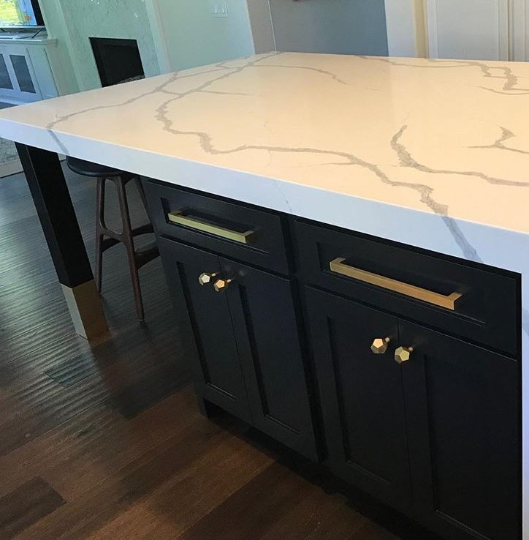Transform Your Kitchen's Look with Special Legs For Kitchen Island Devices
Crucial Variables to Take Into Consideration When Picking Legs For Kitchen Area Island
Picking the appropriate legs for a kitchen island involves a mindful assessment of numerous elements that can dramatically influence both capability and aesthetic allure. As we explore these aspects, it becomes clear that each choice can have far-ranging ramifications for the total kitchen experience.
Product Options
When picking legs for a kitchen area island, recognizing the various material alternatives is important for attaining both aesthetic charm and architectural honesty (Legs For Kitchen Island). The choice of product dramatically influences not only the longevity of the island but likewise its total design and functionality
Steel legs, often made from stainless steel or wrought iron, contribute a commercial and modern-day feel while making sure resilience and security. These products are immune to wear and can support substantial weight, making them optimal for bigger islands.
Another option is engineered products, like MDF or plywood, which can be more cost-effective while still offering a variety of coatings. They may not provide the very same degree of stability as solid timber or steel. Legs For Kitchen Island. Materials such as acrylic or glass can create a modern appearance, though they might require additional support to make certain security.
Ultimately, the selection of product for cooking area island legs must align with the wanted performance and the overall motif of the kitchen area.
Design And Style

When thinking about design, the form and surface of the legs are important. Conical legs can give a feeling of agility and style, while thicker, more robust legs can convey toughness and security. In addition, the coating-- be it repainted, tarnished, or all-natural-- must enhance the cabinets and counter top materials to produce a unified look.
Moreover, the design of the legs can also mirror individual preference. Custom-made or ornamental legs, such as those featuring intricate makings or one-of-a-kind geometric forms, can function as prime focus, adding personality and individuality to the kitchen area. Eventually, the right choice will certainly not only enhance functionality yet likewise elevate the visual allure, making the kitchen area island a standout feature of the home.
Elevation Factors To Consider
Selecting the appropriate elevation for kitchen area island legs is crucial, as it straight affects both functionality and convenience. The common height for a kitchen island commonly varies from 36 to 42 inches, aligning with usual counter top elevations. A 36-inch height is ideal for cooking and cooking, permitting comfy use kitchen area appliances and devices. Conversely, an elevation of 42 inches is typically preferred for islands meant for bar seating, fitting taller feceses and supplying a laid-back eating experience.

It is likewise vital to account for customers' elevations and preferences. Customizing the elevation can guarantee a comfortable experience for all relative, making the cooking area island a much more useful and pleasurable room.
Weight Assistance
Ensuring ample weight support for kitchen island legs is crucial for both safety and capability. The kitchen island often offers multiple functions, including cooking, dining, and added storage, requiring a robust support framework. When selecting legs, it is critical to think about the total weight capacity needed based upon the island's meant usage and the materials that will be put on it.
The choice of product for the legs plays a significant function in their weight-bearing capacities. Solid wood, metal, and sturdy composites normally give remarkable toughness compared to lighter materials. Furthermore, the layout of the legs-- whether they are straight, tapered, or have a pedestal type-- can affect their capacity to distribute weight efficiently throughout the framework.
Always consult the manufacturer's specifications pertaining to tons limitations to guarantee that the legs can sustain the intended weight without compromising safety. In recap, picking cooking area island legs with appropriate weight support is vital for producing a safe and functional cooking area.
Installation and Upkeep
Correct installation and upkeep of kitchen area island legs are critical for making sure longevity and security. This frequently entails protecting the legs to the island base making use of proper bolts, guaranteeing that the legs are degree and lined up.
As soon as installed, normal maintenance is needed to preserve the stability and look of the legs site - Legs For Kitchen Island. For wooden legs, routine cleaning with a moist towel and application of suitable timber gloss can avoid dampness damage and preserve their coating. Metal legs may call for a gentle cleaning option to remove oil and crud, followed by a completely dry cloth to avoid corrosion formation
In addition, inspect the legs consistently for signs of wear or damage, such as fractures or loosened joints. Tightening screws or bolts as needed can also extend the life expectancy of the legs. By sticking to these installment and upkeep techniques, homeowners can ensure that their kitchen island stays durable and visually next page appealing for many years to find.
Final Thought

Visual comprehensibility is extremely important in selecting the design and design of legs for a kitchen island, as these elements greatly influence the total atmosphere of the room. Conical legs can supply a feeling of agility and elegance, while thicker, extra durable legs can share strength and security.Selecting the suitable elevation for kitchen area island legs is crucial, as it directly impacts both capability and convenience. In recap, choosing kitchen area island legs with ample weight support is necessary for producing a safe and practical culinary area.
In final thought, selecting legs for a kitchen island demands mindful factor to consider of numerous variables, consisting of product options, design, height, weight support, and installation.